Using .NET libraries in x++ can be tricky sometimes, which is why there is documentation on the differences: .NET Interop from X++
(X++ and C# comparison may also be of interest).
Looking at some other examples how the EEPlus library is used in x++, e.g. in class CustCollectionsExcelStatement, I noticed that instead of the Cells["address"] syntax to determine a cell range, method get_Item is used instead. This is because .NET arrays have restricted support in x++ (see How to: Use X++ Syntax for CLR Arrays for more information).
So I rewrote the statement as
CustTableWorksheet.get_Item("B1:D1").Merge = true;
Unfortunately, this causes other compiler errors. After some further trial and error I ended up with the following:
ExcelRange cells = worksheet.Cells.get_Item("B1:D1");
cells.Merge = true;
I don't have a source for this, but I think this is because chaining multiple expressions for .NET objects can cause issues in x++.
Here is my full test sample code:
using OfficeOpenXml;
class CreateExcelWithMergedCells
{
public static void main(Args _args)
{
using (System.IO.MemoryStream stream = new System.IO.MemoryStream())
{
using (var package = new ExcelPackage(stream))
{
ExcelWorksheet worksheet = package.Workbook.Worksheets.Add('Merged cells');
ExcelRange cell = worksheet.Cells.get_Item('B1');
cell.Value = 'Hello World';
ExcelRange cells = worksheet.Cells.get_Item('B1:D1');
cells.Merge = true;
package.Save();
}
File::SendFileToUser(stream, 'Merged cells demo.xlsx');
}
}
}
And this is what the resulting Excel file looks like:

